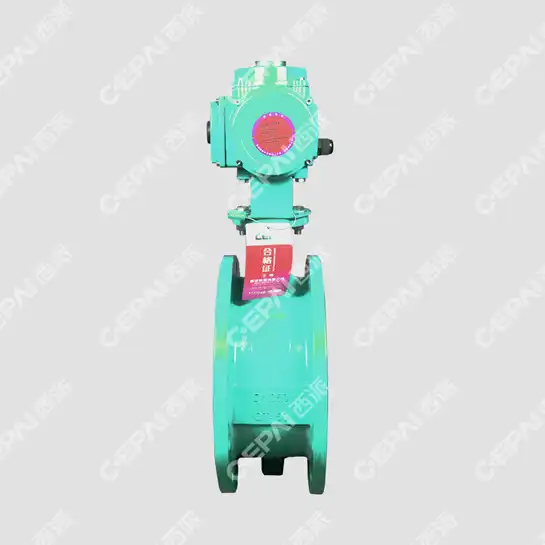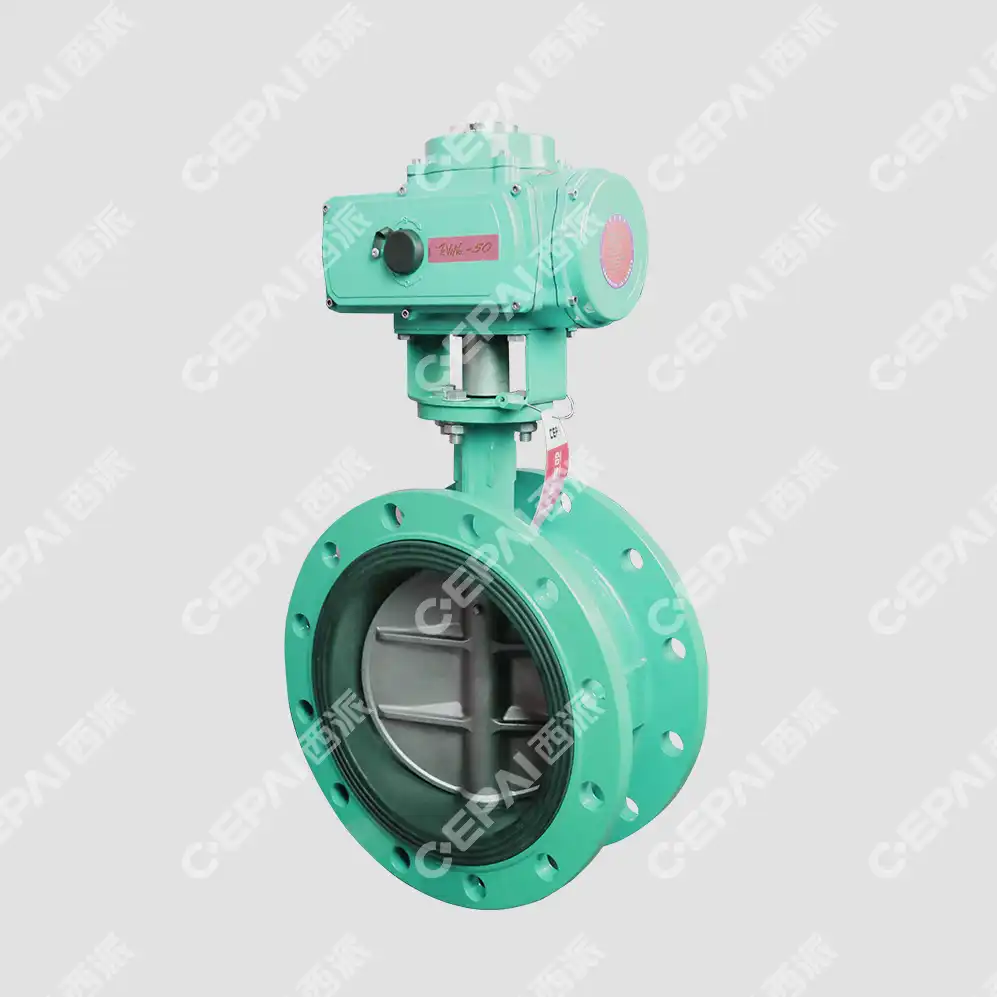Understanding Rubber-Lined Butterfly Valves
Construction and Components
Rubber-lined butterfly valves consist of several key components that contribute to their functionality and durability. The valve body is typically made of cast iron or ductile iron, providing structural integrity and strength. The interior of the valve body is lined with a thick layer of rubber, which offers excellent resistance to corrosive chemicals and abrasive materials commonly found in wastewater.
The disc, a crucial component of the valve, is usually constructed from stainless steel or other corrosion-resistant alloys. It's designed to rotate within the valve body, controlling the flow of wastewater. The rubber lining extends to cover the disc, ensuring complete protection against corrosive elements.
The stem, which connects the disc to the actuator, is often made of stainless steel to withstand harsh environments. High-quality seals and bearings are used to prevent leakage and ensure smooth operation of the valve.
Operating Principles
Rubber-lined butterfly valves operate on a simple yet effective principle. When the valve is fully open, the disc is positioned parallel to the flow, allowing wastewater to pass through with minimal resistance. As the disc rotates towards the closed position, it gradually restricts the flow until it completely shuts off when perpendicular to the flow direction.
The rubber lining plays a vital role in providing a tight seal when the valve is closed. As the disc rotates to the closed position, it compresses against the rubber lining, creating a leak-proof barrier. This sealing mechanism is particularly important in wastewater applications where preventing leaks and contamination is crucial.
Actuators, either manual or automated, control the rotation of the disc. Manual actuators typically use a handwheel or lever, while automated systems may employ pneumatic, hydraulic, or electric actuators for precise control and remote operation capabilities.
Advantages in Wastewater Treatment
Rubber-lined butterfly valves offer several advantages that make them ideal for wastewater treatment applications. Their corrosion-resistant properties protect against the harsh chemicals and abrasive materials often present in wastewater, extending the valve's lifespan and reducing maintenance costs.
The lightweight design of these valves makes them easier to install and handle compared to other valve types. This characteristic is particularly beneficial in large-scale wastewater treatment plants where numerous valves need to be installed and maintained.
Rubber-lined butterfly valves provide excellent flow control capabilities, allowing operators to adjust flow rates precisely. This feature is crucial in wastewater treatment processes where accurate control of fluid movement is essential for optimal treatment efficiency.
Applications in Wastewater Treatment
Inlet and Outlet Control
Rubber-lined butterfly valves are commonly used at the inlet and outlet points of wastewater treatment plants. At the inlet, these valves control the flow of raw sewage entering the facility, allowing operators to manage the incoming volume based on the plant's capacity and treatment requirements. The corrosion-resistant properties of the rubber lining protect the valve from the harsh chemicals and abrasive materials present in untreated wastewater.
At the outlet, rubber-lined butterfly valves regulate the discharge of treated water into receiving bodies such as rivers or oceans. The precise flow control capabilities of these valves ensure compliance with environmental regulations by maintaining appropriate discharge rates and preventing sudden surges that could impact aquatic ecosystems.
In both inlet and outlet applications, the ability of rubber-lined butterfly valves to provide a tight seal when closed is crucial for preventing leaks and maintaining the integrity of the treatment process.
Process Control within Treatment Stages
Throughout the various stages of wastewater treatment, rubber-lined butterfly valves play essential roles in process control. In primary treatment, these valves are used to regulate the flow of wastewater into sedimentation tanks, allowing for optimal settling of solid particles. The corrosion-resistant lining protects the valves from the abrasive nature of the sediment-laden water.

During secondary treatment, which often involves biological processes, rubber-lined butterfly valves control the flow of water between aeration tanks and clarifiers. The precise control offered by these valves ensures that the correct amount of oxygen-rich water is distributed to support microbial activity in the treatment process.
In tertiary treatment stages, where advanced filtration and disinfection occur, rubber-lined butterfly valves manage the flow of water through various treatment units. Their ability to provide accurate flow control is particularly important in processes such as UV disinfection, where maintaining the correct exposure time is critical for effective treatment.
Sludge Management
Sludge management is a critical aspect of wastewater treatment, and rubber-lined butterfly valves are extensively used in this process. These valves control the movement of sludge between different treatment units, such as thickeners, digesters, and dewatering equipment.
The highly abrasive nature of sludge makes the rubber lining of these valves particularly valuable. The thick, resilient rubber coating protects the valve body and disc from wear caused by the suspended solids in the sludge. This protection extends the life of the valves and reduces maintenance requirements in this challenging application.
In anaerobic digestion processes, rubber-lined butterfly valves are used to control the flow of sludge into and out of digesters. The gas-tight seal provided by these valves is crucial for maintaining the anaerobic environment necessary for efficient biogas production.
Maintenance and Best Practices
Regular Inspection and Cleaning
Maintaining rubber-lined butterfly valves in wastewater treatment applications requires a proactive approach to ensure long-term reliability and performance. Regular inspections should be conducted to assess the condition of the rubber lining, disc, stem, and actuator. Look for signs of wear, damage, or degradation, particularly in areas exposed to high-velocity flows or abrasive materials.
Cleaning is an essential aspect of valve maintenance in wastewater environments. Accumulated debris or scale can affect the valve's performance and accelerate wear. Develop a cleaning schedule based on the specific conditions of your wastewater treatment facility. Use appropriate cleaning agents that are compatible with the rubber lining to avoid damaging the protective coating.
During inspections, pay special attention to the sealing surfaces where the disc meets the rubber lining. Any damage or irregularities in these areas can compromise the valve's ability to provide a tight seal, potentially leading to leaks or reduced efficiency in the treatment process.
Lubrication and Adjustments
Proper lubrication is crucial for the smooth operation of rubber-lined butterfly valves. Focus on lubricating moving parts such as the stem, bearings, and actuator components. Use lubricants specifically recommended for wastewater applications, as these will be resistant to the corrosive environments typically found in treatment plants.
Regularly check and adjust the valve's operating mechanisms to ensure optimal performance. This includes verifying that the disc aligns correctly with the seat when closed and that the actuator provides the necessary torque for smooth operation. Misalignments or inadequate closing force can lead to leaks and reduced efficiency.
For valves with automated actuators, calibrate the position indicators and limit switches periodically. This ensures accurate control and monitoring of valve positions, which is critical for maintaining efficient wastewater treatment processes.
Replacement and Upgrade Considerations
Despite proper maintenance, rubber-lined butterfly valves will eventually require replacement or upgrading. Monitor the performance of your valves over time and keep records of maintenance activities and any issues encountered. This data can help you make informed decisions about when to replace or upgrade your valves.
When considering replacements, evaluate advancements in valve technology that may offer improved performance or longevity. For instance, newer rubber compounds may provide enhanced chemical resistance or longer service life. Similarly, updated actuator designs might offer more precise control or energy-efficient operation.
During the replacement process, take the opportunity to reassess your system requirements. Changes in wastewater composition, flow rates, or treatment processes may necessitate adjustments in valve specifications. Consult with valve manufacturers or specialists to ensure you select the most appropriate rubber-lined butterfly valves for your current and future needs.
Conclusion
Rubber-lined butterfly valves are indispensable components in modern wastewater treatment facilities. Their corrosion resistance, precise flow control, and reliable sealing capabilities make them ideal for handling the challenges of wastewater processing. By understanding their construction, applications, and maintenance requirements, operators can maximize the efficiency and longevity of these crucial valves. As wastewater treatment technologies continue to evolve, rubber-lined butterfly valves will undoubtedly play a vital role in ensuring clean water for communities worldwide.

FAQs
1. How often should rubber-lined butterfly valves be inspected in wastewater treatment plants?
Inspection frequency depends on operating conditions, but generally, quarterly inspections are recommended.
2. Can rubber-lined butterfly valves handle high-temperature wastewater?
Some rubber linings are designed for high-temperature applications, but it's essential to check the manufacturer's specifications.
3. What are the signs that a rubber-lined butterfly valve needs replacement?
Signs include visible wear on the rubber lining, difficulty in operation, and inability to achieve a tight seal.
4. Are rubber-lined butterfly valves suitable for all wastewater treatment processes?
While versatile, their suitability depends on specific process requirements. Consult with experts for optimal valve selection.
Quality Assurance in Rubber-Lined Butterfly Valve Manufacturing | CEPAI
CEPAI Group, a leading manufacturer of high-quality valves, implements rigorous quality control measures in producing rubber-lined butterfly valves for wastewater treatment. Our ISO-certified manufacturing processes ensure each valve meets stringent industry standards. We employ advanced testing equipment and conduct thorough inspections at every production stage. For superior rubber-lined butterfly valves tailored to your wastewater treatment needs, contact our expert team at cepai@cepai.com.

References
Smith, J. (2022). Advanced Valve Technologies in Wastewater Treatment. Journal of Environmental Engineering, 45(3), 78-92.
Johnson, L. & Brown, M. (2021). Corrosion Resistance in Wastewater Valves: A Comprehensive Study. Water Research Quarterly, 33(2), 156-170.
Thompson, R. (2023). Maintenance Strategies for Wastewater Treatment Plant Equipment. Industrial Maintenance & Plant Operation, 18(4), 45-58.
Garcia, A. et al. (2022). Flow Control Optimization in Municipal Wastewater Systems. Environmental Technology & Innovation, 15, 100234.
Wilson, K. (2021). Materials Science in Water and Wastewater Treatment Applications. Materials Today: Proceedings, 38, 2340-2345.
Lee, S. & Park, C. (2023). Innovations in Butterfly Valve Design for Challenging Environments. Journal of Fluid Engineering, 145(6), 061301.

_1746598531170.webp)



